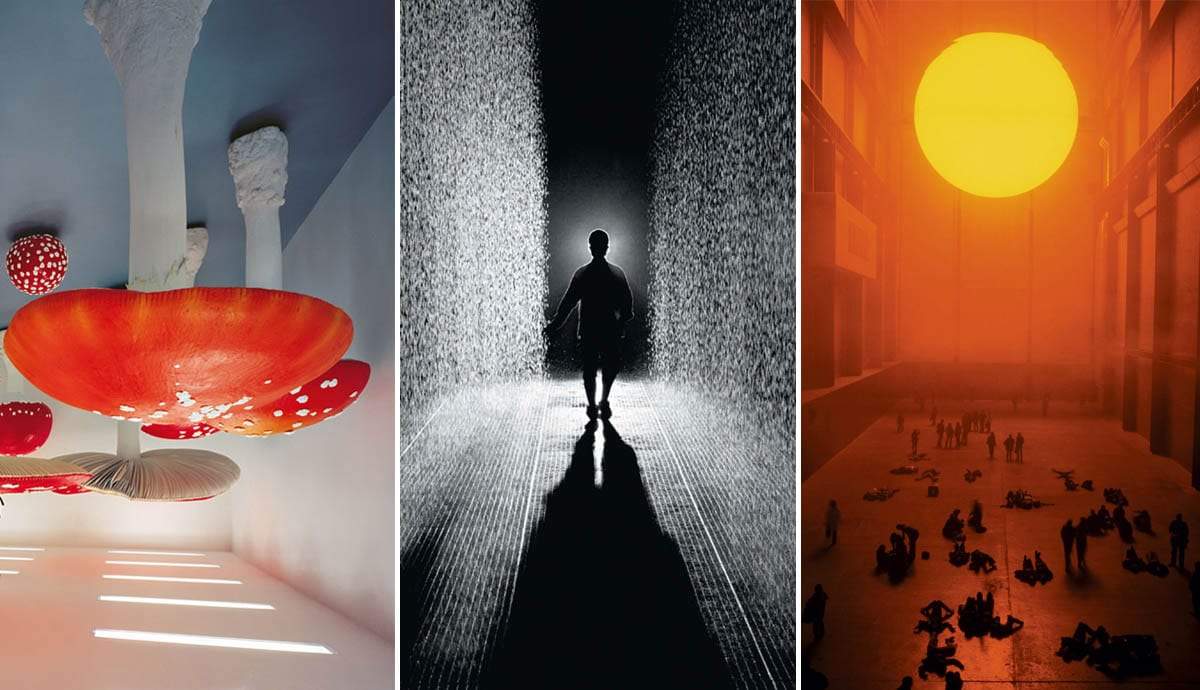
The latest large-scale project by Olafur Eliasson is “about slowing down.” Starting next month, the contemporary installation artist will take over the world’s most iconic digital billboards with Lifeworld, which comprises four site-specific abstract videos.
Lifeworld by Olafur Eliasson

Starting in October, Olafur Eliasson‘s Lifeworld will be shown nightly in four famously busy locations: London’s Picadilly Circus, Seoul’s K-Pop Square, Berlin’s Kurfürstendamm, and New York City‘s Times Square, where the installation will purposefully coincide with the polarizing U.S. presidential election. Non-urban art enthusiasts will be able to access Lifeworld virtually via WeTransfer as part of a new collaboration with Eliasson.
Lifeworld replaces crystal-clear, fast-paced advertising images with a colorful, slow-moving haze. Each version of Lifeworld is site-specific, featuring blurry, reflective footage of the place in which it is shown. “Displayed on the advertising screens in our inner city areas, I hope the artwork relaxes our sense of depth and time to allow a moment of introspection, explained Eliasson. “I think my blurry film is a closer depiction of reality than the one normally seen on screens because it’s hospitable. It holds space for you. I think that is a kind of fierce tenderness.”
“Here We Are Letting the Pixels Drift”

In a statement from his Berlin studio, Eliasson further illuminated the ethos behind Lifeworld: “Unlike what is on the screen normally, which is a highly unblurred, exceptionally optimized use of every pixel to capitalize on the money you pay for this exposure, here we are letting the pixels drift, there’s uncertainty at hand.”
Eliasson continued, “I believe our cities, as environments, can feel utilitarian when they are primarily dedicated to set modes of commuting or consuming. Over the last year, I have worked with my team in the studio to create an artwork that contends with this experience.” Lifeworld is intended to be “about slowing down. It’s about tenderness. It’s about abstraction.”
Who Is Olafur Eliasson?

Eliasson’s cutting-edge contemporary installations combine art, architecture, and science. The Icelandic-Danish artist utilizes light, water, and air to immerse viewers in a multisensory experience. He also frequently experiments with color. As his career kicked off, Eliasson founded Studio Olafur Eliasson, a Berlin hub for spatial research, in 1995. He created his breakthrough installation, The Weather Project, in 2003. Installed in the Tate Modern’s Turbine Hall, The Weather Project featured an illusory sun, inviting over two million visitors to step into a shimmering golden haze. In the years since Eliasson has spearheaded a number of public art projects around the world.







